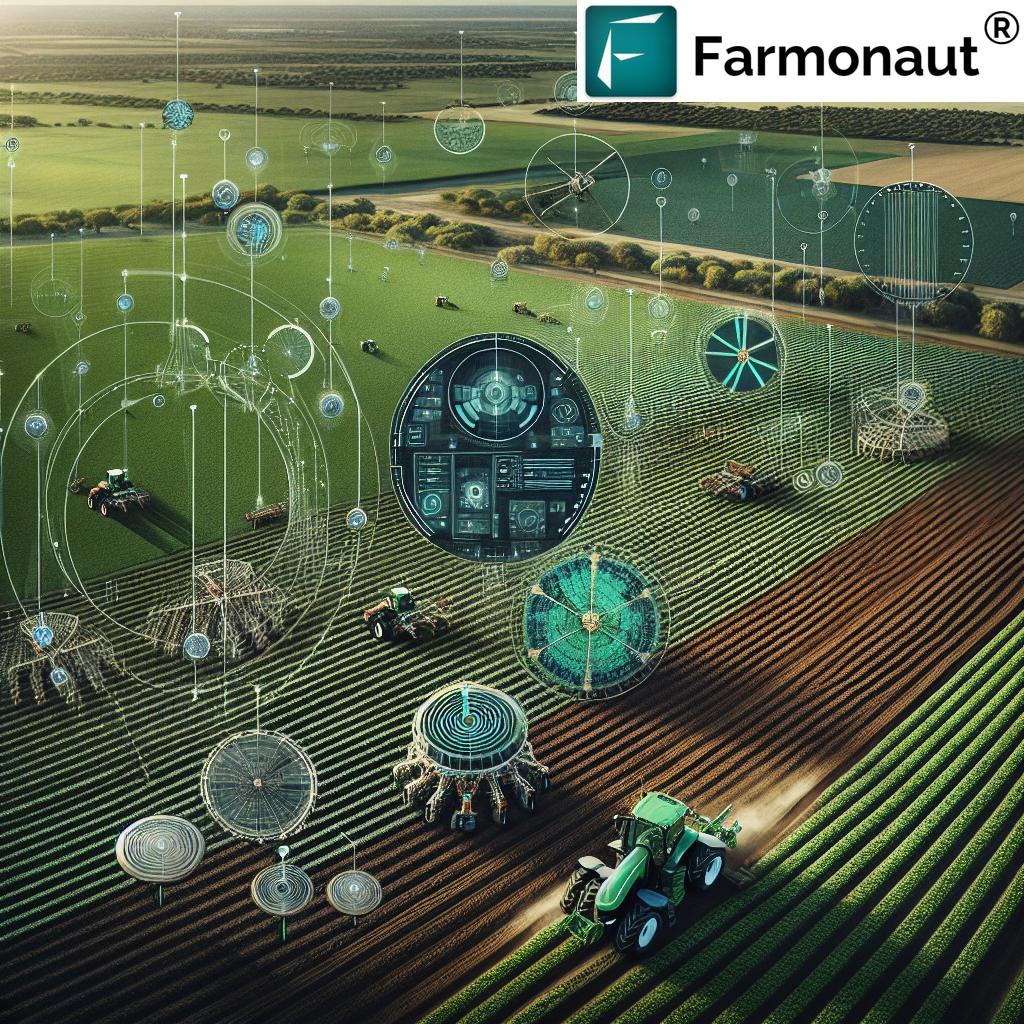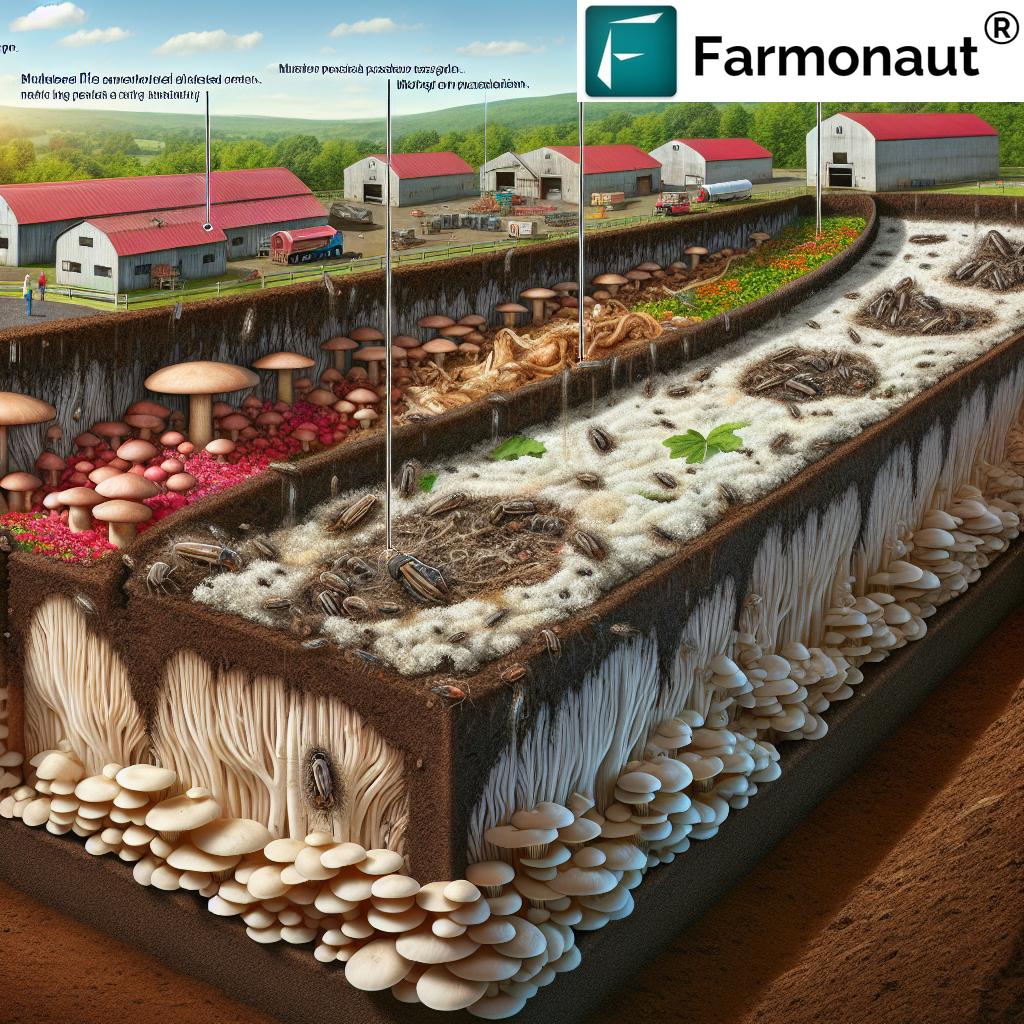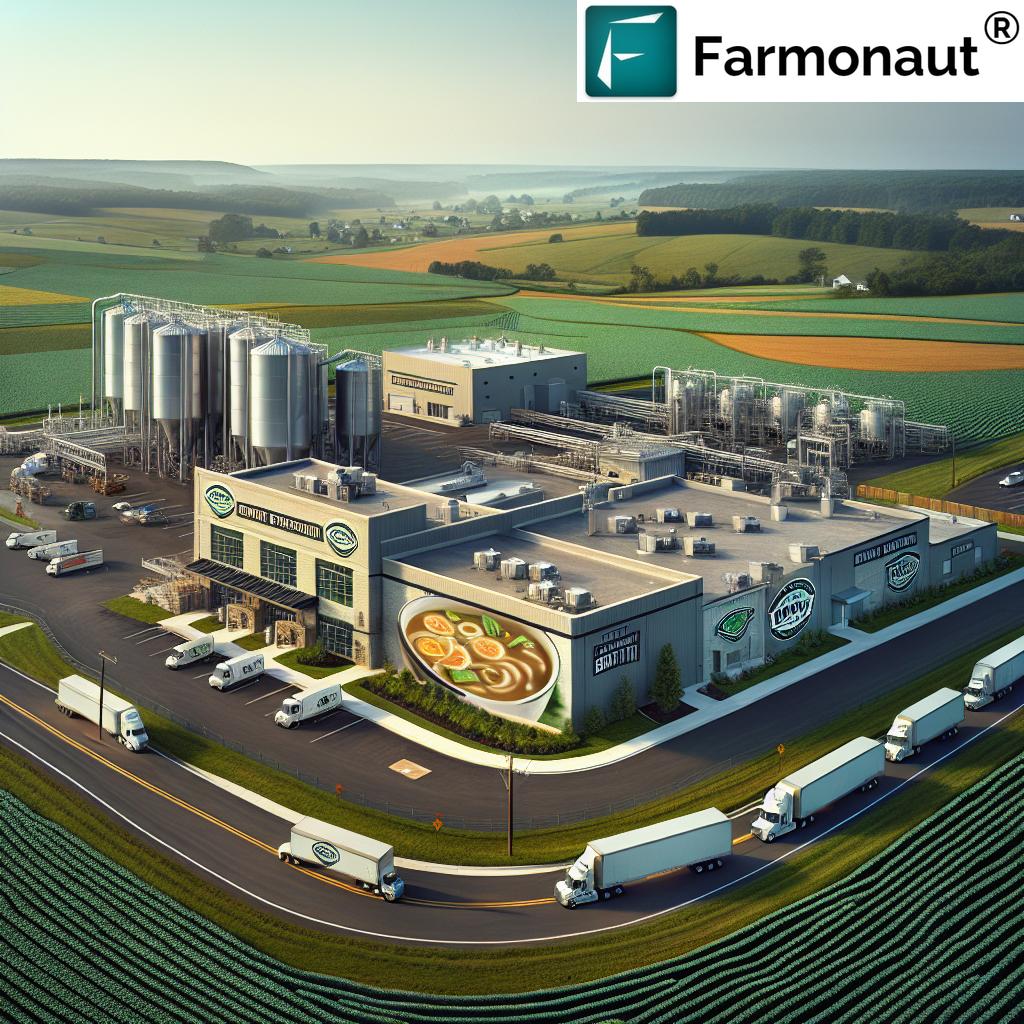2012 Census of Aquaculture: Michigan Farms Sales Data – Insights, Trends & the Evolution of Agriculture in 2025
Table of Contents
- Quick Trivia: Michigan Aquaculture Stats (2012)
- Michigan’s Agricultural Census Data: Foundations for Growth
- 2012 Census of Aquaculture: Michigan Farms Sales Data Breakdown
- Comparative Data Table: Aquaculture Farm Types & Sales (2012)
- The Evolution of the Agriculture Michigan Landscape
- Aquaculture Trends: Growth and Integration in Michigan
- Farm Sales Data: Economic Performance & Market Dynamics
- Integration of Aquaculture with Traditional Agriculture for Sustainable Growth
- Facing Challenges & Shaping Opportunities (2025 and Beyond)
- How Farmonaut Satellite Data Empowers Agriculture Michigan
- FAQs on 2012 Census of Aquaculture & Michigan Farms Sales
- Conclusion: Michigan’s Forward-Looking Agri-Aquaculture Landscape
- Farmonaut Subscription Options
“Michigan aquaculture farms reported over $5.2 million in sales according to the 2012 Census of Aquaculture data.”
“In 2012, Michigan had 101 aquaculture farms, highlighting steady growth in the state’s sustainable agriculture sector.”
Michigan’s Agricultural Census Data: Foundations for Growth
The agriculture Michigan sector is rooted in a tradition of innovation, adaptation, and resilience. Central to our understanding of this landscape is the comprehensive data gathered through the census of agriculture and the 2012 Census of Aquaculture 2013 Michigan farms sales reports. Conducted every five years by the U.S. Department of Agriculture, these reports chart the evolution of farming, offer vital insights into demographic changes, and inform strategic planning for a sustainable future.
By comparing the 2002 census of agriculture census of aquaculture 2005 Michigan farms sales with the 2012 census of aquaculture 2013 Michigan farms sales and subsequent data, we witness patterns of consolidation, notable farm diversity, and the dynamic nature of the Michigan agricultural sector. The census data not only record production and sales but also highlight shifts in labor, resource use, and the rise of sustainable practices.
- Diversity remains a hallmark: Michigan’s farms span row crops (corn, soybeans), dairy, specialty horticulture, and emerging aquaculture systems.
- Gradual reduction in total number of farms: As seen across the U.S., Michigan has moved toward fewer, larger, and more specialized operations—a trend reflected in census data across two decades.
- Adaptive market approaches: Growing value-added, agritourism, and direct-to-consumer sales reflect the state’s creative farm economy.
- Growing aquaculture segment: The 2012 Census of Aquaculture confirms Michigan’s steady progress in fish and shellfish farming, driven by abundant freshwater resources and local market demand.
These census insights offer a crucial foundation to understand Michigan’s agricultural strengths, current opportunities, and the challenges we face moving into 2025 and beyond.
2012 Census of Aquaculture: Michigan Farms Sales Data Breakdown
The 2012 Census of Aquaculture 2013 Michigan farms sales data provides a unique snapshot of the state’s aquaculture sector—a segment that’s now shaping the future of both food production and regional food security. According to the census, Michigan hosted 101 aquaculture farms in 2012, with statewide sales exceeding $5.2 million USD.
Let’s analyze the context, patterns, and relevance:
- Farm types: Finfish (trout, tilapia, perch, bass), shellfish (primarily bait and ornamental fish), and aquatic plants constitute the major segments in the aquaculture census.
- Sales trends: Total Michigan aquaculture farm sales reflect steady growth since the 2002 census, despite falling slightly behind some high-production states.
- Market integration: Most Michigan aquaculture producers target local and regional markets, mirroring consumer interest in fresh, sustainably produced food and transparent supply chains.
- Sustainable practices: There is a rising adoption of recirculating aquaculture systems, nutrient recycling, and integration with traditional farming.
- Economic significance: While aquaculture remains smaller compared to livestock and row crops, it has gained prominence as a means to diversify farm incomes and address environmental management.
To fully grasp Michigan’s farm evolution in this area, we must dive deeper into the comparative performance of different aquaculture farm types based on census figures.
Comparative Data Table: Aquaculture Farm Types & Sales (2012)
Below is an overview table drawing from 2012 census of aquaculture 2013 Michigan farms sales data. This structured comparison allows us to visualize farm diversity, economic output, and adoption of sustainable practices side by side.
| Farm Type | Estimated Number of Farms | Total Sales (USD) | Average Sales per Farm (USD) | % of Total State Sales | Sustainable Practices Adoption Rate (%) |
|---|---|---|---|---|---|
| Finfish (Trout, Tilapia, Perch, Bass) | 56 | $3,100,000 | $55,357 | ~60% | 61% |
| Shellfish | 10 | $400,000 | $40,000 | 8% | 58% |
| Ornamental Fish & Aquatic Plants | 17 | $650,000 | $38,235 | 12% | 44% |
| Baitfish & Other | 18 | $1,050,000 | $58,333 | 20% | 36% |
Key Takeaways:
- Finfish farms dominated both farm numbers and revenue, reflecting Michigan’s water resource strengths and market demands.
- Sustainable practice adoption rates are highest in finfish and shellfish, signaling market-driven shifts toward environmental responsibility.
- Ornamental fish & aquatic plants and baitfish provide crucial income sources, diversifying Michigan’s aquaculture mix.
The Evolution of the Agriculture Michigan Landscape: 2002 to 2025
Navigating from the 2002 census of agriculture census of aquaculture 2005 Michigan number of farms sales to the 2012 census of aquaculture 2013 Michigan farms sales and onward to 2025, we can see a landscape in transition. Through historical data analysis, several themes emerge:
- Farm consolidation: The number of farms in Michigan has gradually decreased, but the average farm size and total output have risen, signifying a shift toward large, specialized operations.
- Diversity as a strength: Diversity remains a hallmark—with ongoing demand for specialty horticulture, dairy, corn and soybeans, and aquaculture products in the local and regional market.
- Market adaptation: Michigan’s farms are increasingly engaging in direct-to-consumer sales, CSA (Community Supported Agriculture), and farm-to-table initiatives, reflecting consumer preferences for freshness and traceability.
- Resilience through innovation: Faced with economic uncertainties and competition, Michigan farmers diversify income streams, invest in sustainable resource management, and adopt technologies that boost productivity without degrading the environment.
These foundations and trends continue shaping resource management and regional development throughout 2025, as Michigan’s farming sector adapts to labor, climate, and market challenges.
“Michigan aquaculture and agriculture sectors are now increasingly intertwined—reflecting both tradition and innovation as we head toward a sustainable food future.”
Aquaculture Trends: Growth and Integration in Michigan (2012-2025)
The significance of aquaculture within the agriculture Michigan story continues to grow, as indicated by 2012 census of aquaculture 2013 Michigan farms sales data and current figures. Here’s how this sector has evolved:
- Rising importance and prominence: Aquaculture is increasingly integrated as a core food production system, driven by the state’s abundant freshwater lakes and diversification strategies among farmers.
- Targeting sustainability: Systems such as recirculating aquaculture and aquaponics (fish and plants grown symbiotically) are becoming standard, echoing consumer interest in sustainable food sources and environmental management.
- Expanding local markets: Most Michigan aquaculture producers supply local and regional consumers, thereby enhancing food security and rural economic resilience.
- Educational and extension support: The integration of aquaculture best practices is supported by extension services and policy—promoting growth and diversity.
- Labor and workforce changes: As number of farms steadies, new skills and labor arrangements are needed to sustain and grow the sector.
Aquaculture’s growth trajectory is not just about revenue—it’s also about the intersection of technology, environmental stewardship, and food system innovation.
Farm Sales Data: Economic Performance & Market Dynamics
Examining 2012 census of aquaculture 2013 Michigan farms sales alongside 2002 census of agriculture census of aquaculture 2005 Michigan farms sales reveals the economic story of adaptation, resilience, and ongoing opportunity:
- Sales variability: Farm revenue is subject to price volatility, input costs, and market access issues. Michigan’s farmers adapt by diversifying both crops and market channels.
- Direct-to-consumer sales: As of 2025, a significant percentage of farms in Michigan supplement their sales through CSA, farmers’ markets, and on-farm experiences.
- Value-added products: Many aquaculture and agricultural operations now offer smoked fish, artisanal dairy, processed foods, and agri-tourism to enhance profits.
- Market adaptation: Technological improvements, such as real-time monitoring and blockchain traceability (see Farmonaut’s Traceability Solutions), further help farms build trust, meet regulations, and deliver transparency along the supply chain.
Over the years, historical census data demonstrate a dynamic farm economy—with farmers adopting new income sources for greater resilience and long-term growth.
Integration of Aquaculture with Traditional Agriculture for Sustainable Growth
Perhaps the most significant trend in the evolution of agriculture Michigan is the integration of aquaculture and traditional farming for greater sustainability and resource management. Mosaic farming systems—such as aquaponics—combine fish and plant production, recycling nutrients, reducing waste, and improving output per resource unit.
- Water and nutrient efficiency: Integrated systems capture fish waste as fertilizer for crops, creating low-input, closed-loop systems.
- Diversification for resilience: These farms can weather market uncertainties, labor shifts, and climate challenges by diversifying income and production.
- Technological leverage: Platforms like Farmonaut’s Large-Scale Farm Management App empower operators to monitor crop health, water quality, and resource use via satellite and AI, driving efficiency and sustainability.
- Environmental impact tracking: Farms now monitor carbon footprint and resource use using solutions such as Farmonaut’s Carbon Footprinting Tool. This helps demonstrate, and improve, sustainable practices for consumers and regulatory bodies alike.
According to the 2012 census of aquaculture 2013 Michigan farms sales data, growth is increasingly concentrated in innovative, integrated systems—an essential step for Michigan’s sustainable food future.
Facing Challenges & Shaping Opportunities (2025 and Beyond)
Despite positive momentum, the agriculture Michigan and aquaculture sectors must strategically address several persistent and emerging challenges:
- Climate variability: Unpredictable weather patterns affect both land and water-based farm operations, requiring sophisticated data-driven management.
- Labor shortages: Farm labor is tight; innovative employment models and technology adoption (such as AI-driven monitoring and farm robotics) are increasingly indispensable.
- Market uncertainties: Fluctuating commodity prices, export/import shifts, and supply chain disruptions necessitate resilience and adaptability among producers.
- Capital and financing barriers: Access to affordable credit and insurance is crucial for farm growth. Satellite-based verification tools (like Farmonaut’s Crop Loan & Insurance Solution) can streamline this process, reducing risk and improving access.
- Regulatory environment: Compliance with environmental standards and product traceability regulations are more demanding, but can become differentiators for forward-thinking farms.
For policymakers, ongoing census data analysis, investment in research, education, and infrastructure are key. For producers, the challenge is to integrate best practices, leverage real-time data, and remain responsive to both risks and opportunities.
Access Real-Time Agricultural and Aquaculture Data via Farmonaut API
Integrate precise satellite insights—vegetation indices, weather data, and historical resource trends—directly into your farm management or aquaculture monitoring workflow. With Farmonaut’s API platform, Michigan farmers and agribusinesses can boost productivity and ensure compliance with sustainable resource management practices.
Learn more about customization and integration at Farmonaut API Developer Docs.
How Farmonaut Satellite Data Empowers Agriculture Michigan (2025)
In 2025 and beyond, satellite-driven insights are game-changers for agriculture Michigan and aquaculture. We at Farmonaut complement census figures and state reports by:
-
Real-time crop monitoring:
We employ multispectral satellite imagery to help Michigan’s farmers assess vegetation health (NDVI), soil moisture, and field variability, driving targeted interventions for higher productivity and lower environmental impact. -
AI-Driven advisory:
With the Jeevn AI Advisory System, we deliver custom agronomic suggestions—from optimal irrigation to disease risk management—adjusted for Michigan’s climate and soil characteristics. -
Blockchain-based traceability:
By leveraging Farmonaut’s Traceability Solutions, producers can build transparent, verifiable supply chains—a critical demand in Michigan’s regional and specialty markets. -
Environmental impact tracking:
We enable Michigan’s farms and aquaculture operations to quantify and reduce their carbon footprints using Farmonaut’s Carbon Footprinting Tools—essential for a sustainable, future-proof operation. -
Resource/fleet management:
Large-scale farms can optimize transportation and equipment utilization with our Fleet Management Platform—reducing costs and environmental impact.
Our solutions are modular and mobile-friendly—accessible via Android, iOS, and web, supporting Michigan’s rural economy with advanced analytics and accessible technology.
FAQs on 2012 Census of Aquaculture & Michigan Farms Sales
- What is the 2012 Census of Aquaculture?
- The 2012 Census of Aquaculture is a detailed survey conducted by the U.S. Department of Agriculture to collect data on aquaculture operations, production, sales, and practices. It helps understand sector trends and inform policy and business strategies in Michigan and nationally.
- How much did Michigan aquaculture farms sell in 2012?
- According to 2012 census of aquaculture 2013 Michigan farms sales data, sales exceeded $5.2 million, split among finfish, shellfish, and other segments.
- What sustainable practices are Michigan aquaculture farms adopting?
- Practices include recirculating aquaculture systems, integrated aquaponics, responsible feed management, water conservation, and environmental impact tracking, as outlined in recent census reports.
- How is aquaculture integrated into Michigan’s broader agriculture?
- Through systems like aquaponics, farms combine fish and plant production for greater efficiency and sustainability. Technology platforms such as Farmonaut support these systems with satellite-based monitoring and AI-driven analytics.
- Where can I get real-time data for managing Michigan farms?
- Farmonaut offers API-based real-time crop and resource data, handy for agribusinesses, individual producers, and government agencies for monitoring, forecasting, and compliance.
- How do census trends impact planning for 2025?
- Census data inform strategic investments, farm diversification, and sustainable practice planning. Managing labor, addressing climate risks, and adopting new technology are key takeaways for future readiness.
Conclusion: Michigan’s Forward-Looking Agri-Aquaculture Landscape
The analysis of 2012 census of aquaculture 2013 Michigan farms sales, alongside historical agricultural data, reveals a dynamic, resilient, and evolving sector. Michigan’s blend of traditional agriculture and modern aquaculture positions it as a regional leader in sustainable production, food security, and economic development.
- Data-driven approaches and innovative integration—like aquaponics and real-time monitoring—are key to future growth and environmental stewardship.
- Farmers that diversify, adopt sustainable practices, and leverage technologies such as those offered by us at Farmonaut—from AI advisory to blockchain traceability—will thrive amidst ongoing trends and uncertainties.
- Policy makers and industry stakeholders must continue investment in infrastructure, research, and education—guided by the comprehensive insights provided by census of agriculture and census of aquaculture.
As we journey through 2025 and beyond, the intersection of historical data, innovative practice, and real-time satellite insights will define Michigan’s agri-aquaculture future—one rooted in adaptability, community, and a vision for sustainable progress.
Farmonaut Subscription Options
Want to leverage advanced satellite imagery, AI-driven advisories, and blockchain-enabled traceability directly for your Michigan farm, aquaculture operation, or agri-business? Explore our flexible subscription plans—affordable, scalable, and built for 21st-century agriculture and environmental management:
Looking ahead, advanced data analysis, sustainable integration, and accessible technology will keep Michigan at the forefront of agricultural and aquaculture innovation—bolstered by reliable insights from ongoing census studies and solutions like those from Farmonaut.














